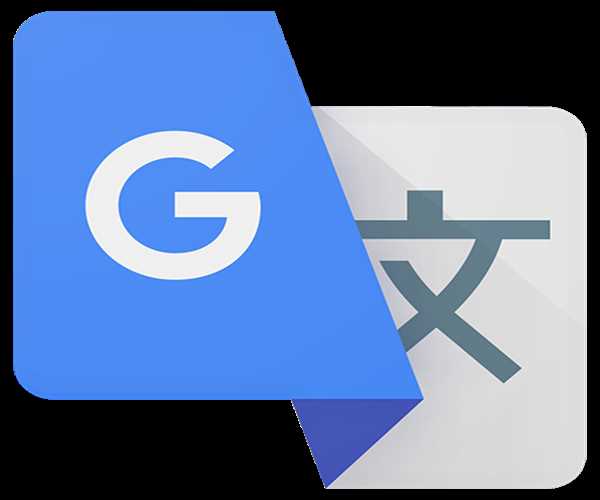Search here

26-Dec-2022
How Google Translation is more accurate compared to other machine translation
Google Translation is more accurate than other machine translation services because: -Google Translation is powered by the Google Translate API. This allows it to translate a wide variety of text, including user-generated content. -Google Translation is constantly being updated, so it is more accurate than older machine translation services. -Google Translation is free, so you can use it to translate any text.
History of Google Translation
Google Translation is a machine translation service provided by Google. It can translate text from one language to another. Google Translation is more accurate than other machine translation services because it uses a neural machine translation engine. This engine is constantly learning from new translations and improving its accuracy.
Features of Google Translation
- Google Translate is a free multilingual machine translation service developed by Google, to translate text. It offers a website interface, mobile apps for Android and iOS, and an API that helps developers build browser extensions and software applications. Google Translate supports over 100 languages at various levels and as of May 2017, serves over 500 million people daily.
- When translating a text, Google Translate tries to find the best match for the source text within the target language's grammar and syntax. It also looks for patterns in the source text that have been previously translated and uses these to improve the quality of its own translations.
- Google Translate is constantly improving its language detection and translation quality through both human and machine input. In November 2016, Google announced that Google Translate would switch to a neural machine translation engine - Google Neural Machine Translation (GNMT) - which uses artificial intelligence to provide more accurate and natural-sounding translations.
- GNMT is designed to reduce translation errors by using a neural network to better understand the context of a sentence. This means that GNMT can not only translate individual words, but also entire phrases and sentences.
- In addition to GNMT, Google Translate also uses a number of other techniques to improve translation quality, such as:
- Statistical machine translation: This technique analyses a large number of documents that have been translated by human translators, in order to identify patterns that can be used to improve machine translation.
- Human translation: Google Translate relies on human translators to improve translation quality. Translators can suggest corrections to translations made by Google Translate, and these suggestions are then used to improve the quality of future translations.
- Community input: Google Translate also relies on input from its users to improve translation quality. Users can suggest translations for words and phrases that they feel are incorrect, and these suggestions are then used to improve the quality of future translations.
- Translation memory: Translation memory is a technique that stores previously translated sentences and uses these translations to improve the quality of future translations.
Google Translate is constantly improving its language detection and translation quality through both human and machine input. In November 2016, Google announced that Google Translate
Advantages of using Google Translation
Google Translation is a free multilingual machine translation service provided by Google. It can translate text, speech, images, websites, or real-time video, from one language to another.
Google Translation is more accurate compared to other machine translation services because it uses Google's vast data and technology. Google's algorithms are constantly learning and improving, making Google Translation more accurate over time.
Some of the advantages of using Google Translation include:
1. Google Translation is free to use.
2. It is easy to use and can be accessed from anywhere with an internet connection.
3. It can translate between multiple languages.
4. It uses Google's vast data and technology to provide more accurate translations.
Disadvantages of using Google Translation
When it comes to translating between languages, Google Translation is one of the most popular and accurate machine translation services available. However, there are some disadvantages to using Google Translation that you should be aware of.
One of the biggest disadvantages of using Google Translation is that it can be slow. If you're translating a large document, it can take a while for the translation to process. Additionally, if you're translating a document that contains a lot of technical jargon, the translation can be less accurate.
Another disadvantage of using Google Translation is that it can be expensive. If you're using the service for business purposes, you'll need to pay for a subscription. The subscription costs can add up, especially if you're translating a large number of documents.
Finally, some people find the interface of Google Translation to be difficult to use. If you're not familiar with the service, it can take some time to get used to it. Additionally, the interface can be a bit overwhelming if you're translating a large document.
Future of Google Translation
Google Translation is constantly improving its algorithms and expanding its language support. In the future, it is likely that Google Translation will become even more accurate and reliable. Additionally, Google is likely to continue expanding its language support, making it available in more and more languages. This will make it an even more useful tool for people all over the world.

SEO and Content Writer
I am Drishan vig. I used to write blogs, articles, and stories in a way that entices the audience. I assure you that consistency, style, and tone must be met while writing the content. Working with the clients like bfc, varthana, ITC hotels, indusind, mumpa, mollydolly etc. has made me realized that writing content is not enough but doing seo is the first thing for it.
Join Our Newsletter
Subscribe to our newsletter to receive emails about new views posts, releases and updates.
Copyright 2010 - 2025 MindStick Software Pvt. Ltd. All Rights Reserved Privacy Policy | Terms & Conditions | Cookie Policy